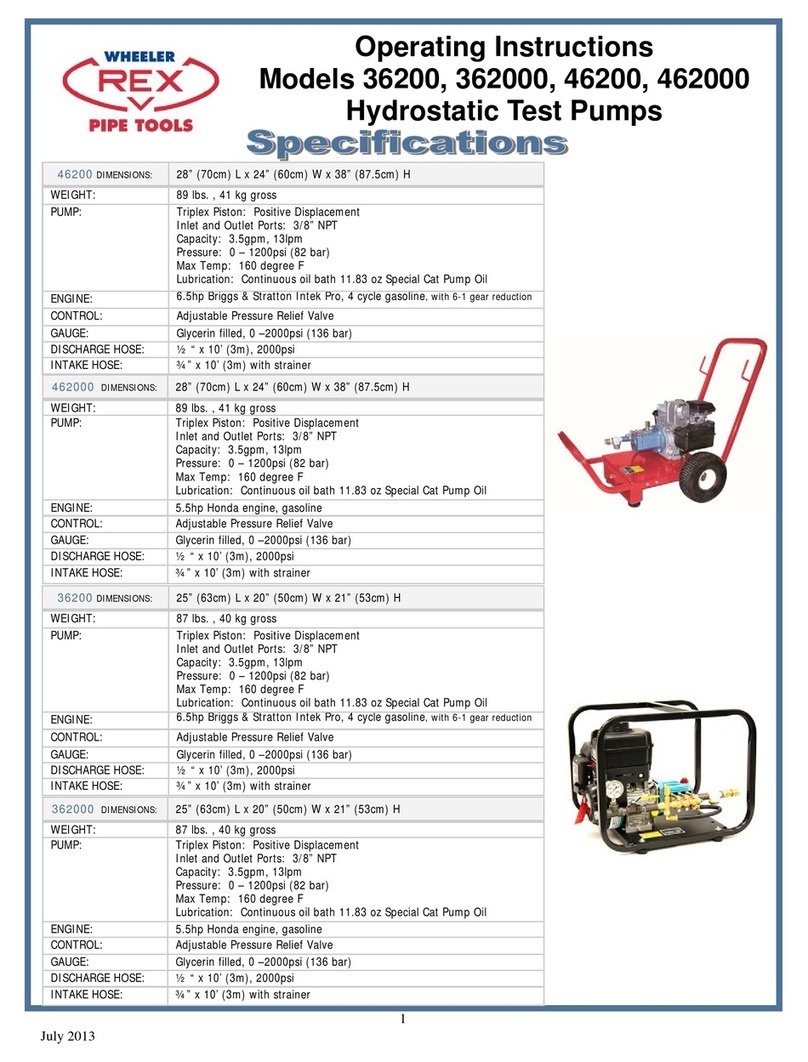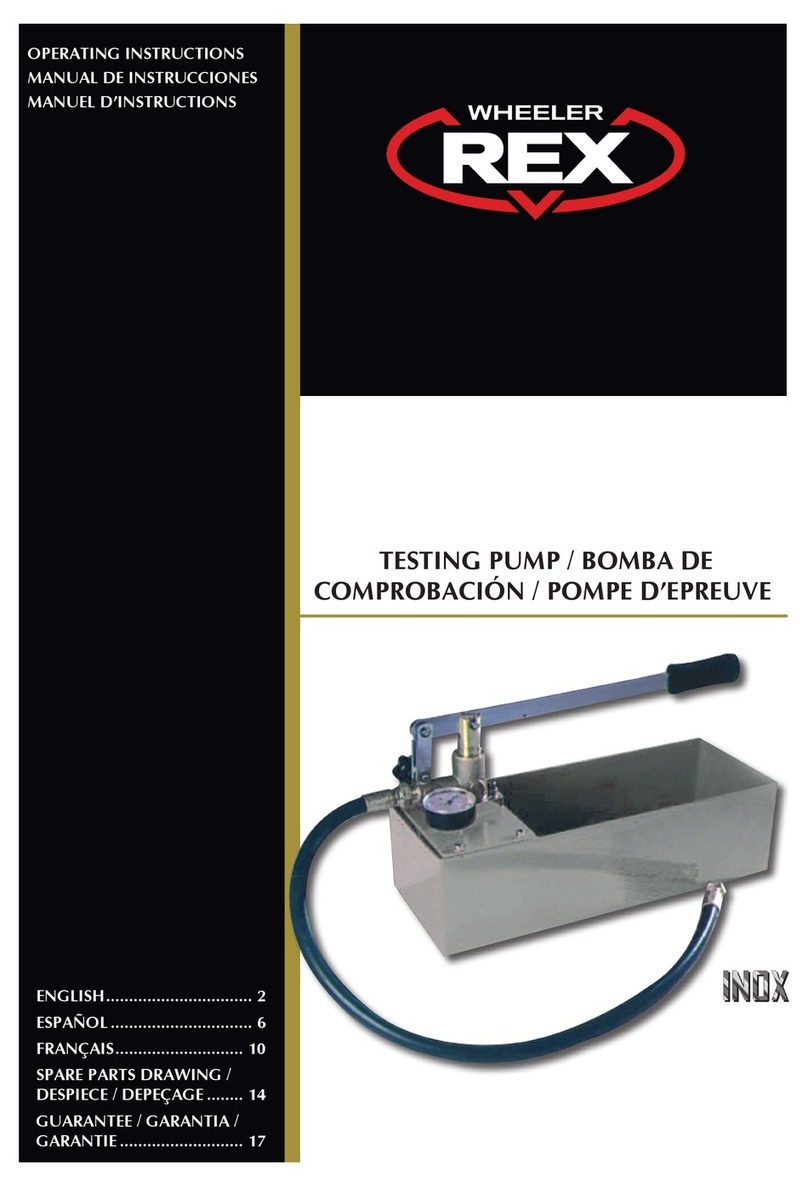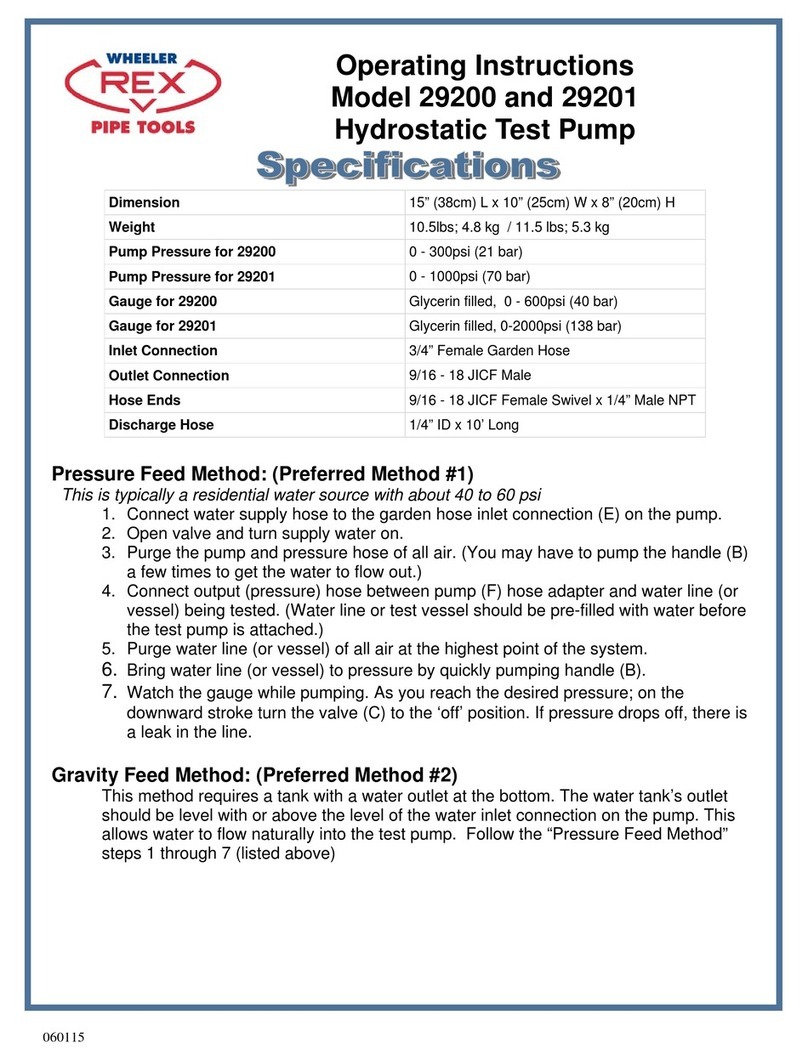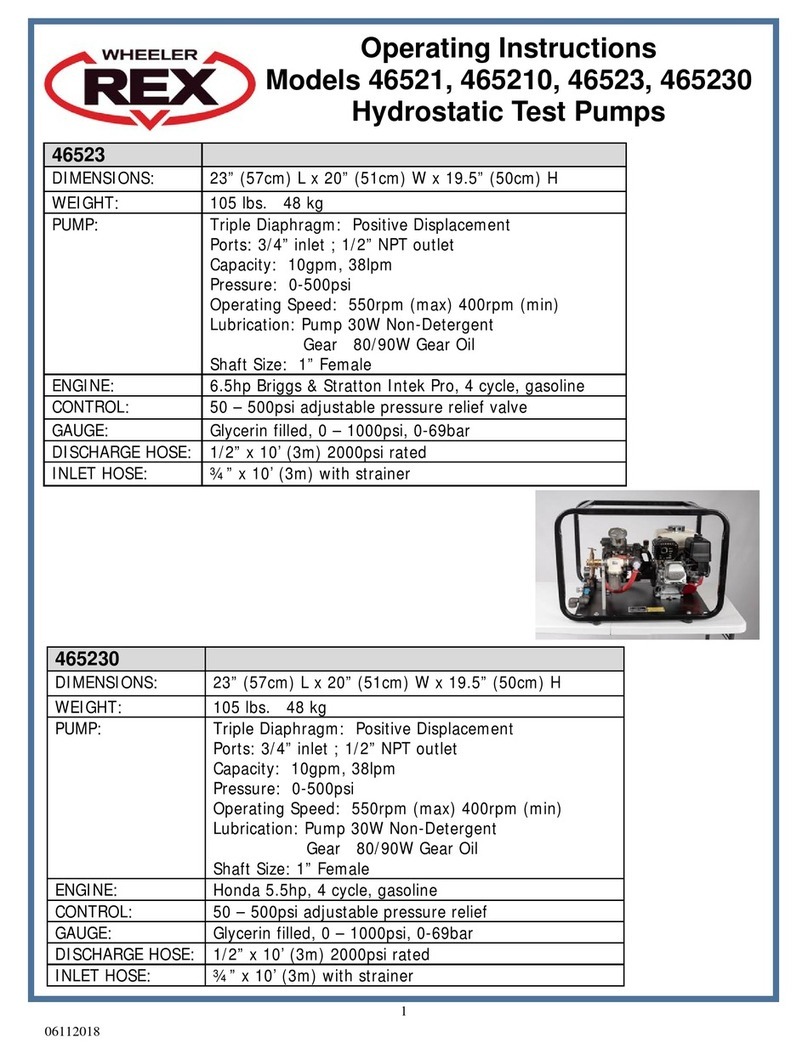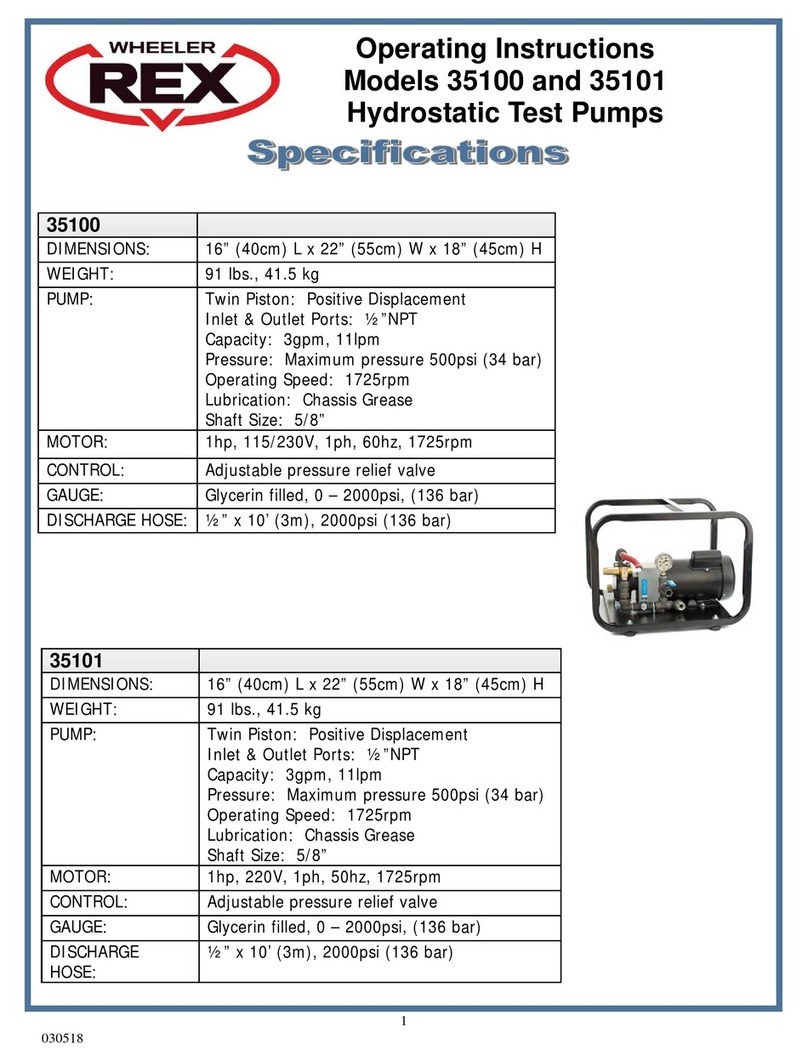
Mudsucker Trash Pump
Unpacking
After unpacking the unit, inspect carefully for any
damage that may have occurred during transit. Check
for loose, missing or damaged parts.
Specific Safety Information for Gasoline
Engine Driven Pumps
1. Carefully read the instruction manuals supplied by
the engine manufacturer before attempting to assem-
ble/disassemble or operate the engine or any other
part. The “Warning” and “Caution” statements in this
manual signal potential hazardous conditions to the
operator or equipment. Know when these conditions
can exist. Take necessary steps to protect personnel
as well as equipment.
WARNING
Gasoline is a highly combustible fuel. Use it with care!
The improper use, handling and/or storage of gaso-
line can be dangerous. Help prevent accidents by
following these safety rules:
a. Use gasoline only as fuel, never as a cleaning fluid.
b, Always use an approved container to hold or store
gasoline. Never store gasoline in familiar containers
such as milk gallons or soda pop bottles.
c. Never store gasoline near a heater or an open
flame.
d. When storing or using gasoline, make sure
container is out of the reach of children.
e. Never add gasoline to a running or hot engine.
Spilled gasoline on a hot engine may cause a fire or
an explosion. Fill gasoline tank outdoors and wipe up
any spills.
f. Have a fire extinguisher nearby. Be sure extinguish-
er is in operating condition - check the pressure
gauge or indicator. Be familiar with its proper use.
Consult the local fire department for the correct type
of extinguisher for your application Extinguishers
rated ABC by the National Fire Protection Association
are appropriated for all applications.
g. On permanent installations, be sure all fuel
supplies have a positive shut-off valve. Fuel lines
must be of steel piping, adequately secured and free
from leaks. Do not use copper piping or flexible lines
as copper becomes hardened and brittle and will
break. Use black pipe on natural gas or gaseous
fuels, but not on gasoline or diesel fuels. Piping the
engine should be a suitable flexible line that is
compatible with the fluid.
Positively No Smoking!
2. Check engine oil, fuel levels and gear box oil levels
before initial startup each day. Stay away from mov-
ing parts due to the danger of becoming caught in
moving parts. Avoid loose jackets, shirts, sleeves and
ties. Make sure all nuts and bolts are secure. Keep
power shields and guards in place. If adjustment
MUST be made while the unit is running, use extreme
caution around hot manifolds, moving parts etc.
3. Do not work with this equipment when mentally or
physically fatigued.
4. Be careful not to touch the exterior of the engine,
especially the muffler and the area around it. It is hot
enough to be painful or cause injury.
5. To prevent accidental starting, always remove the
spark plug or disconnect and ground the spark plug
wire before working on the engine or the equipement
driven by the engine.
6. DO NOT RUN THE ENGINE IN AN ENCLOSED
AREA!!
Exhaust gases contain carbon monoxide, which is an
odorless and deadly gas that will cause death if
breathed too long. If equipment is located in an
enclosed area with an exhaust line to the outside,
regularly check the exhaust system for leaks. Be sure
the area is well ventilated.
7. If the gas engine is equipped with a spark arrester
screen in the muffler, it should be inspected for wear
periodically and replaced when necessary.
Specific Safety Information for Electric Motor
Driven Pump
1. This unit is not waterproof and is not intended to be
used in potentially wet locations. The motor is de-
signed to be used in a clean, dry location with access
to an adequate supply of cooling air. Ambient temper-
ature around the motor should not exceed 104° F
(40° C). For outdoor installations, motor must be pro-
tected by a cover that does not block air flow to and
around the motor. This unit is not weatherproof nor is
it able to be submersed in water.
2. When wiring an electrically driven pump, follow all
electrical and safety codes, as well as the most re-
cent United States National Electrical Code (NEC)
and the Occupational Safety and Health Act (OSHA).
WARNING
Risk of electrical shock! Never connect the green
(or green and yellow) wire to a live terminal
3. To reduce the risk of electric shock, the motor must
be securely and adequately grounded! This can be
accomplished by either (1) inserting plug (portable)
directly into a properly installed and grounded

